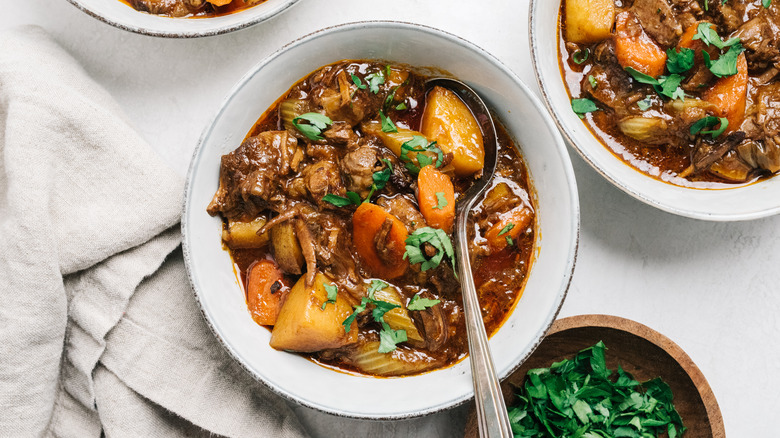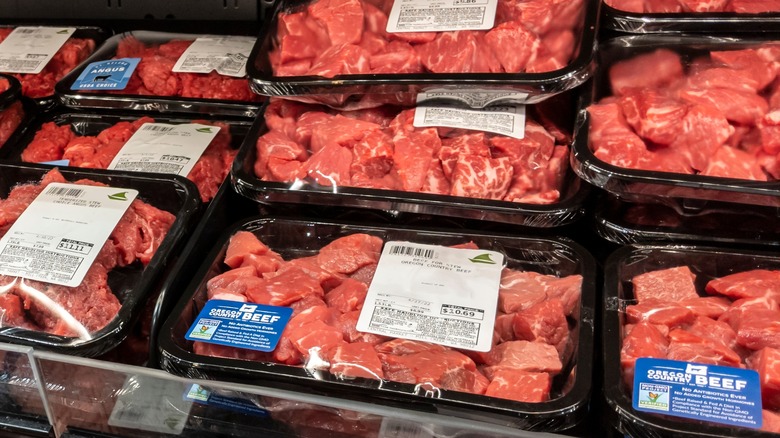What Cut Of Beef Is Usually Used For Stew Meat?
Nothing beats a savory, deep, and rich beef stew for an incredible meal at home. Sure, it takes a long time to cook, but all you need are some decent chunks of beef, stock, veggies, and a few other additions. When you're looking to pick up a package of pre-cut "stew meat" instead of slicing up a larger steak, you should know that the most common cut in such products is chuck, with round coming close behind.
What is stew meat? We're talking about pre-packaged beef cut into cubes or chunks, easily found at the grocery store. Every butcher puts something different into these products, but ideally, you want beef that breaks down slowly and won't completely fall apart as your stock comes together and the vegetables cook down. For this reason, leaner cuts with more muscle and a slight marbling are most common and perform best. Plus, any tough connective tissues full of collagen will break down during the slow cook, adding tons of flavor and keeping the meat tender and moist.
Chuck and round both deliver on these aspects. Chuck comes from the shoulder of a cow, and both top and bottom round come from the back of the legs. Both cuts are heavily muscled, with a low to medium fat content and a lot of connective tissue. When cooked properly, they will come out melt-in-your-mouth delicious and add an unctuous, beefy flavor to your stew.
How to choose the best stew meat
While both chuck and round are great choices for beef stew, round is usually slightly cheaper than chuck, although both are pretty inexpensive cuts. This is why they often end up in those cheap packs of pre-cut beef. That being said, those packages are sometimes only labeled as "stew meat," with no more specifications. You may want to ask your butcher what you're really getting in the mix.
Figuring out what's in a package of beef is just the first step. When choosing stew meat, make sure the cubes are cut consistently, with uniform marbling. Although you'll likely have to trim off a bit of excess fat and connective tissue before cooking, you don't want meat that's completely white around the edges — that's too much fat, not enough beef.
If you're lucky enough to get plenty of chuck and round, they are incredibly versatile and even make great inexpensive cuts for stunningly tender braised beef or pot roast. Once it's time to cook the beef, coating it in flour and sauteing is a must to lock in flavor. For perfectly browned stew meat, use about a cup of flour for every pound of meat. And for extra flavor, try adding V8 juice to your beef stew or make a beef stew with wine recipe. Once you know what you're looking for, it's easy to choose the best stew meat and prep yourself for success.


